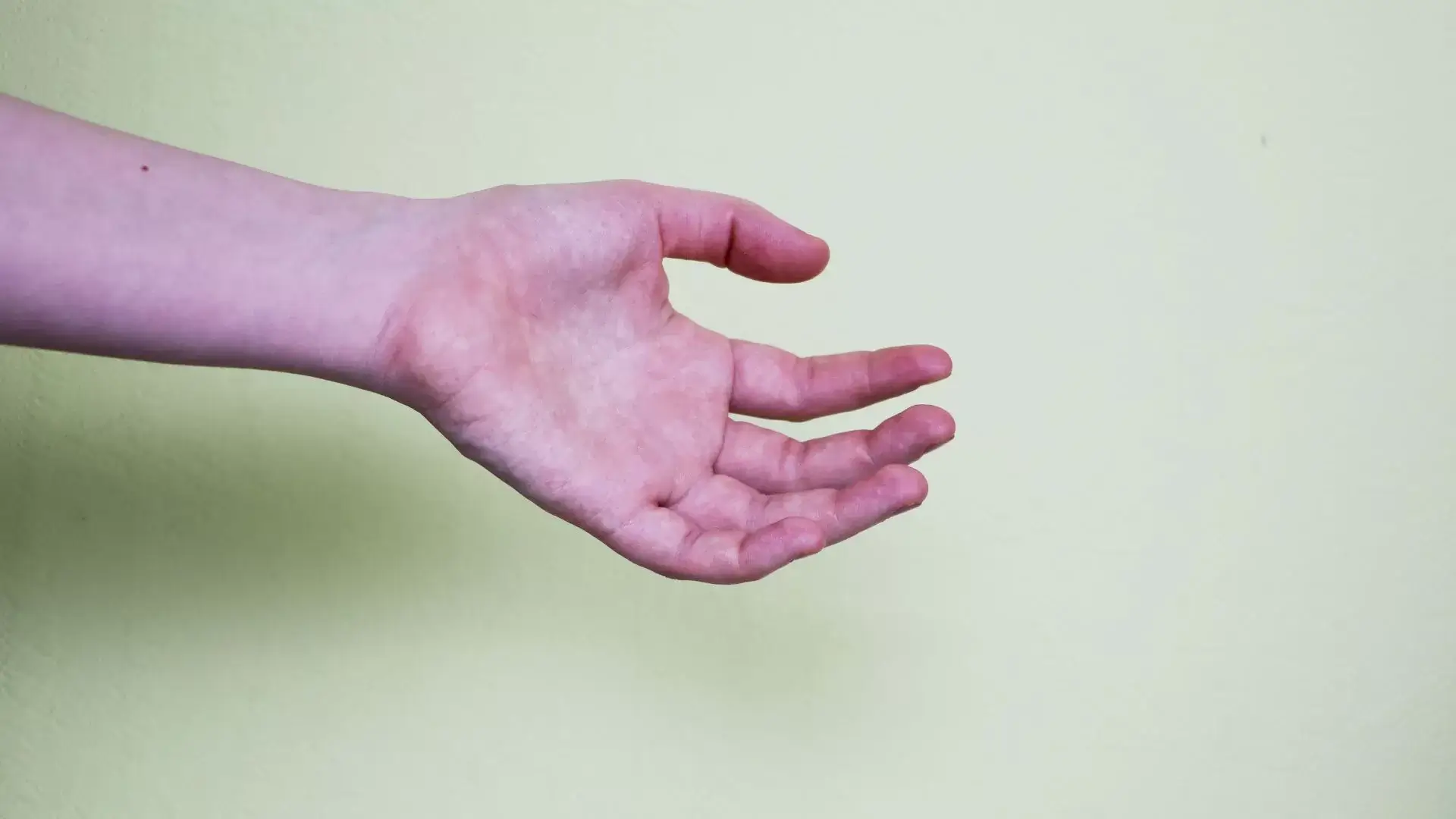If you’re seeking a chiropractor for dystonia in Mississauga, we’re here to help. Our focus is on addressing musculoskeletal imbalances to support neurological health. Through personalized care, we aim to reduce muscle tension and improve spinal alignment, which can enhance communication between the brain and body. We integrate various techniques and collaborate with other therapies to provide a thorough approach. Our goal is to empower you, helping you regain control and improve your quality of life. There’s much more to discover about how chiropractic care can assist in managing dystonia effectively.

At Mississauga Physio Chiro Clinic, we offer an extensive range of physiotherapy and chiropractic services tailored to address the unique challenges faced by individuals with dystonia. Our approach to dystonia treatment combines expert neurological examination with personalized care plans, focusing on alleviating muscle spasms and managing chronic pain.
We understand that dystonia can greatly impact daily life, which is why we incorporate both holistic therapy and alternative medicine into our treatment options. Our Expert Practitioners in Mississauga utilize various techniques, including sensory tricks, to help improve movement and reduce discomfort.
By emphasizing neuroplasticity, we aim to empower our patients to adapt and regain control over their muscle functions. Our physiotherapy and chiropractic services are designed not just to relieve symptoms, but to enhance overall well-being.
In our clinic, we believe in a thorough approach to pain management, ensuring that each individual receives the attention and care they need. Our team works collaboratively with patients, fostering a supportive environment where everyone can feel understood and hopeful about their journey towards recovery. Together, we can navigate the complexities of dystonia and work towards a better quality of life.
Understanding dystonia requires us to explore its underlying causes and the profound effects it has on movement, as this condition can considerably alter how individuals engage with their daily activities. Dystonia is a neurological disorder characterized by involuntary movements and abnormal postures, which can be quite challenging for those affected.
We can categorize dystonia into primary and secondary forms. Primary dystonia usually arises without a known cause, while secondary dystonia is often linked to other medical conditions or environmental factors. Genetic dystonia is a subtype that emphasizes the hereditary aspect of this movement disorder, affecting various individuals differently.
Task-specific dystonia, such as that seen in musicians or writers, triggers involuntary movements during specific activities, complicating their performance. Additionally, spasmodic torticollis, a form of dystonia, affects neck muscles, leading to abnormal head positions.
The impact of dystonia on our lives can be significant, hindering our ability to perform everyday tasks and affecting our overall quality of life. Recognizing these causes and effects helps us understand the importance of seeking appropriate treatments, including chiropractic care, to manage symptoms effectively.
Several types of dystonia can markedly benefit from chiropractic treatment, offering relief and improved function for those affected. One of the most common forms is cervical dystonia, where muscle contractions lead to involuntary head movements and muscle stiffness. Chiropractic treatment can help alleviate these discomforts by promoting better alignment and reducing muscle tension.
In addition to cervical dystonia, other forms like focal dystonia and generalized dystonia may also respond positively to chiropractic care. By focusing on motor control and addressing muscle imbalances, we can enhance overall mobility and reduce the frequency of painful muscle contractions.
While we often recommend chiropractic adjustments as part of a thorough treatment plan, it is crucial to integrate physical therapy and occupational therapy into our dystonia management strategies. These therapies can complement chiropractic care, enhancing stress management and improving functional abilities.
Recognizing the key symptoms of dystonia is essential for those affected, as it allows for timely intervention and effective management strategies that can greatly improve quality of life. Identifying symptoms early can make a significant difference in the journey toward a proper dystonia diagnosis.
Dystonia symptoms can vary widely, but they often include involuntary muscle contractions, leading to repetitive movements and abnormal postures. For instance, individuals may experience blepharospasm, which causes involuntary eyelid closure, or writer’s cramp, where hand muscles spasm during writing. Limb dystonia might manifest as twisting or awkward movements in the arms or legs, while spasmodic dysphonia affects vocal cords, resulting in disrupted speech.
Additionally, we should be aware of associated muscle weakness, which can compound the challenges faced. These symptoms often stem from imbalances in neurotransmitters in the brain, which are essential for smooth muscle function. By understanding and recognizing these signs, we can advocate for appropriate assessments and treatments, fostering a more supportive environment for those living with dystonia. Early identification can lead to better outcomes and improved daily functioning.

Chiropractic care can play a significant role in managing dystonia by addressing musculoskeletal imbalances and promoting overall neurological health. Through targeted adjustments and therapeutic techniques, we can help improve proprioception and support dystonia rehabilitation. This is particularly important for those experiencing generalized dystonia, where muscle control is compromised.
Incorporating chiropractic care into a multidisciplinary approach can enhance the effectiveness of other treatments, such as muscle relaxants and botulinum toxin injections. By aligning the spine and optimizing functional neurology, we can create an environment conducive to better movement and reduced muscle tension.
Furthermore, chiropractic care often works hand-in-hand with speech therapy and the use of adaptive devices or assistive technology, ensuring a thorough plan that targets the individual’s unique needs. Together, we can empower individuals with dystonia to regain control over their bodies and improve their quality of life.
As we navigate this journey, we need to remember that each person’s experience with dystonia is different. By fostering a supportive environment, we can encourage open communication and collaboration with healthcare providers to maximize the benefits of chiropractic care.
Aligning the spine can greatly enhance nervous system function, facilitating improved communication between the brain and body, which is essential for individuals managing dystonia. Through chiropractic care, we’re able to address postural instability and promote ideal spinal alignment. This alignment can help regulate dopamine levels, which are often disrupted in conditions like idiopathic dystonia.
By utilizing techniques such as electromyography, we can assess nerve function and muscle activity, allowing us to tailor supportive therapies that complement spinal adjustments. This thorough approach not only alleviates symptoms but also supports the overall health of the nervous system.
When we enhance nervous system function through proper spinal alignment, we create a foundation for the body to heal itself, especially for those who may have experienced brain injury or other neurological challenges.
We understand that managing dystonia can be overwhelming, and we’re here to provide empathetic care that focuses on each individual’s needs. By prioritizing spinal health, we can help facilitate better communication between the brain and body, ultimately improving the quality of life for those living with dystonia.
Effective management of cervical dystonia and neck spasms often involves a range of targeted chiropractic techniques designed to alleviate discomfort and restore mobility. As chiropractors specializing in dystonia, we focus on understanding the complexities of conditions like segmental dystonia and acquired dystonia. Our therapeutic techniques aim to improve neck alignment and reduce the frequency and intensity of spasms.
We often incorporate gentle adjustments and mobilization strategies, which help to ease tension in the neck and promote better range of motion. Additionally, we emphasize the importance of patient education and self-care, encouraging participation in dystonia support groups for shared experiences and coping strategies.
While some may rely on anticholinergic medications or consider options like deep brain stimulation, chiropractic care can serve as a complementary approach. By addressing the physical aspects of cervical dystonia, we endeavor to enhance overall well-being and quality of life. Ultimately, our goal is to empower patients to manage their condition more effectively, fostering a collaborative relationship in their journey toward relief and improved function.
To complement the chiropractic techniques we’ve discussed for cervical dystonia, implementing targeted muscle relaxation strategies can greatly help in managing dystonic spasms. These strategies not only address muscle tension but also promote overall well-being, which is essential in our holistic approach to treatment.
One effective method is progressive muscle relaxation, where we consciously tense and then relax different muscle groups. This technique enhances our awareness of muscle tension and can markedly reduce the discomfort associated with dystonic spasms. Additionally, gentle stretching exercises can help alleviate tightness and improve flexibility in affected areas.
Incorporating breathing exercises into our routine can also be beneficial. Deep, controlled breaths help relax both our mind and body, promoting a sense of calm that can diminish the intensity of spasms. Using heat therapy, such as warm compresses, can further assist in muscle relaxation, providing immediate relief from pain.
As we work with our chiropractor, integrating these muscle relaxation strategies into our therapy can enhance pain management and overall effectiveness of treatment strategies for dystonia. By combining these approaches, we can foster a more balanced and comfortable life.
How can we enhance postural stability and movement control for individuals with dystonia? As chiropractors, we recognize that dystonia, including multifocal dystonia and hemidystonia, is often linked to dysfunction in the basal ganglia, which plays a vital role in movement regulation. Through targeted therapeutic interventions, we can help individuals regain better muscle coordination and control.
By focusing on improving postural stability, we can alleviate some of the challenges posed by these neurological disorders. Our approach often includes a combination of spinal adjustments and specific exercises tailored to individual needs. These interventions aim to correct any misalignments, which can contribute to instability, and enhance overall movement efficiency.
Moreover, we emphasize the importance of patient education in understanding their condition and actively participating in their recovery. With our support, individuals can work towards improved muscle coordination and stability, which can greatly enhance their quality of life. Together, we can pave the way for a more stable future, allowing those affected by dystonia to navigate their daily activities with greater ease and confidence.

As we continue to enhance postural stability and movement control, incorporating proprioception training and functional neurology offers promising strategies for individuals with dystonia. This approach focuses on improving our body’s awareness and movement patterns, which can be especially beneficial for those experiencing laryngeal dystonia, musician’s dystonia, or writer’s cramp.
Proprioception training involves exercises designed to enhance our sensory perception, which can help in managing symptoms like dystonic tremor. By engaging in specific movements and activities, we can potentially retrain our brain’s response to muscle control, leading to a reduction in discomfort and improved function.
Functional neurology complements this by evaluating and addressing the underlying neurological components of dystonia. With techniques informed by brain MRI and genetic testing, we can better understand the individual variations in how dystonia manifests, including conditions related to cerebral palsy.
Together, these strategies provide a holistic approach that not only targets the symptoms but also respects the complexity of the condition. By focusing on proprioception and neurological function, we can empower ourselves toward better movement and enhanced quality of life.
Integrating chiropractic care with other treatments for dystonia can enhance overall therapeutic outcomes and provide a more extensive approach to managing this complex condition. As we navigate the landscape of dystonia research, we recognize that conditions like oromandibular dystonia, writer’s cramp, and musician’s dystonia often require a multi-faceted treatment strategy.
Chiropractic care can complement traditional medical interventions, including dopamine agonists, baclofen, and levodopa, which are commonly prescribed for managing symptoms associated with dystonia and related disorders such as Parkinson’s disease and progressive supranuclear palsy. By addressing musculoskeletal alignment and function, chiropractic techniques can help reduce discomfort and improve mobility, potentially leading to better overall results when combined with pharmacological treatments.
We believe that a collaborative effort between healthcare providers, including chiropractors and neurologists, can create a more extensive care plan tailored to each individual’s needs. This integrative approach not only fosters a better understanding of how different therapies interact but also empowers patients to take an active role in their treatment journey, ultimately aiming for a higher quality of life.
Managing stress and muscle tension is essential for individuals with dystonia, and chiropractic therapy offers effective techniques to alleviate these issues and enhance overall well-being. We recognize that conditions like writer’s cramp, musician’s dystonia, and torsion dystonia can lead to heightened muscle tension and stress, further complicating daily life. Chiropractic therapy focuses on the spine and nervous system, helping to relieve muscle tension and improve overall function.
Through tailored adjustments and holistic treatment plans, we can support our bodies in managing stress more effectively. By addressing the physical misalignments that contribute to discomfort, chiropractic care can aid in easing the symptoms associated with dystonia and related conditions, including Parkinson’s disease.
We also explore stress management techniques alongside chiropractic therapy, helping us develop coping strategies that promote relaxation and emotional well-being. These methods may include breathing exercises, mindfulness, and gentle stretches that complement our chiropractic sessions. By integrating these approaches, we can create a thorough plan that supports our journey toward reducing muscle tension and managing stress, ultimately leading to a better quality of life for those affected by dystonia.
Chiropractic support plays an essential role in enhancing the effectiveness of mobility aids and adaptive devices for individuals dealing with dystonia. Whether we’re managing conditions like writer’s cramp, musician’s dystonia, Parkinson’s disease, or multiple system atrophy, our chiropractor can help optimize our use of these tools.
By evaluating our posture and biomechanics, chiropractic care can tailor recommendations for mobility aids, ensuring they fit our unique needs. This personalized approach helps improve stability, balance, and overall mobility, making daily activities more manageable. Furthermore, our chiropractor can provide treatment strategies that address muscular tension and joint restrictions, allowing us to use our adaptive devices more effectively.
As we work together with our chiropractor, we gain insights into how these aids can be adjusted for maximum benefit. They may offer advice on
As we explore ways to enhance our well-being, holistic and natural approaches can greatly alleviate the symptoms of dystonia, offering relief alongside the support of mobility aids and adaptive devices. Many of us have experienced the frustration of conditions like writer’s cramp, musician’s dystonia, or tardive dystonia, and we recognize the importance of exploring alternatives to traditional treatments like benzodiazepines.
In Mississauga, Ontario, we can find resources that focus on the mind-body connection, including yoga, meditation, and acupuncture. These practices not only promote relaxation but also help manage symptoms related to dystonia, especially for those living with conditions like Parkinson’s disease, Wilson’s disease, or Huntington’s disease.
We should also consider dietary adjustments and nutritional supplements that may enhance our overall health. By adopting a holistic lifestyle, we may find ourselves more equipped to cope with the challenges of dystonia.
If you’re interested in exploring these options, feel free to contact us for more information. Together, we can discover the natural methods that resonate best with us and promote a better quality of life.
Exploring the differences between chiropractic care and conventional treatments for dystonia reveals unique benefits and considerations that can help us make informed choices for our health. Conventional treatments often involve medications or invasive procedures aimed at managing symptoms, which can come with side effects and varying levels of effectiveness. While these options may be necessary for some, they don’t always address the underlying issues contributing to dystonia.
On the other hand, chiropractic care focuses on the musculoskeletal system, emphasizing spinal alignment and nervous system function. By addressing structural imbalances, chiropractors can help improve our body’s overall function and potentially reduce symptoms. This approach often promotes a sense of well-being and can empower us to take an active role in our health.
While chiropractic care doesn’t replace conventional treatments, it can complement them, providing a holistic approach that many find beneficial. We must consider our individual needs and preferences when exploring these options. It’s crucial to engage in open discussions with healthcare providers to make certain that any chosen path aligns with our overall health goals, fostering a thorough strategy to manage dystonia effectively.
Finding expert chiropractic care for dystonia in Mississauga can greatly enhance our journey towards managing this complex condition while complementing any conventional treatments we may be considering. Engaging with a knowledgeable chiropractor allows us to explore tailored approaches that focus on our unique needs and symptoms.
Chiropractors specialize in understanding the musculoskeletal system, which plays a vital role in dystonia. By evaluating our posture and spinal alignment, they can identify areas of tension or imbalance that may exacerbate our symptoms. Through targeted adjustments and therapeutic techniques, chiropractic care aims to improve our overall function and reduce discomfort.
Additionally, many chiropractors emphasize a holistic approach, incorporating lifestyle advice, exercises, and stress management strategies that can empower us to take control of our health. We should seek practitioners who are not only skilled in chiropractic techniques but also understand the intricacies of dystonia.
Mississauga, a vibrant city located in the Greater Toronto Area, offers a diverse community and a wealth of resources for residents seeking support for various health conditions, including dystonia. With its multicultural atmosphere, we find that Mississauga caters to a wide range of needs, making it easier for individuals and families to access essential services.
In our city, numerous healthcare facilities and practitioners specialize in treating dystonia, including chiropractors who understand the complexities of this neurological condition. We’re fortunate to have a blend of traditional and alternative therapies available, which allows us to explore different avenues for relief and management.
Moreover, Mississauga hosts various support groups and educational workshops aimed at raising awareness about dystonia and providing emotional support to those affected. These community initiatives foster a sense of belonging, reminding us that we’re not alone in our journey.
As we navigate our health challenges, we can take comfort in knowing that Mississauga is committed to enhancing the quality of life for all its residents, ensuring we have access to the resources and support we need.

Typically, a chiropractic session lasts about 30 to 60 minutes, depending on individual needs and treatment goals. During this time, we’ll focus on assessment, adjustments, and any necessary therapeutic techniques. It’s important for us to create a comfortable environment where we can address specific concerns. We’ll also take the time to discuss our progress and any adjustments needed in our approach, as everyone’s experience with treatment may vary.
When considering chiropractic treatment, we should be aware that there are some risks involved. While most sessions are safe, potential side effects can include discomfort, soreness, or, in rare cases, more serious complications. It’s essential we communicate openly with our chiropractor about our specific conditions and concerns. By doing so, we can guarantee that we’re making informed decisions that prioritize our health and well-being throughout the treatment process.
Generally, the number of sessions needed for improvement can vary based on individual circumstances, but most of us find that a series of treatments over several weeks is beneficial. We might start with one to two sessions per week, evaluating progress regularly. It’s important for us to communicate openly with our healthcare provider to tailor the treatment plan to our specific needs, ensuring we’re on the right path toward improvement.
Yes, we can combine chiropractic care with medication for managing dystonia. Many of us find that integrating different treatment approaches can enhance overall effectiveness and improve our quality of life. While chiropractic care focuses on spinal alignment and nervous system function, medication addresses the neurological aspects of the condition. It’s important to consult with our healthcare providers to guarantee a coordinated approach that considers our individual needs and health goals.
When we’re looking for a chiropractor to help with conditions like dystonia, we should prioritize specific qualifications. It’s essential to guarantee they have a Doctor of Chiropractic degree and are licensed in our area. Experience with neurological conditions is a plus, and we might also want to ask about their continuing education in this field. Finally, a compassionate approach and good communication skills can make a significant difference in our care experience.
Reach out to us today to book an appointment or learn more about our services. Our friendly team is here to answer your questions and help you take the first step toward improved health and wellness.
(647) 372-1209

At our “Mississauga Physio Chiro Clinic”, we are dedicated to providing personalized care that addresses the root cause of your discomfort. With a team of experienced physiotherapists and chiropractors, we focus on restoring your mobility, relieving pain, and enhancing your overall well-being.